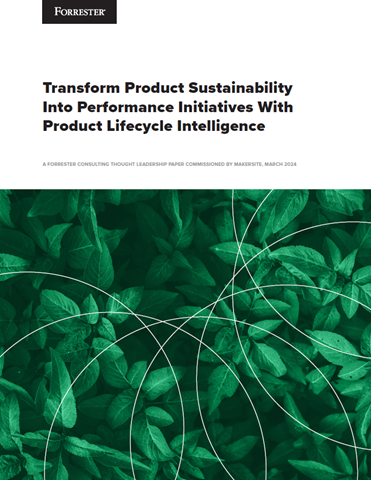Defenders of the budget

Steve Bell at Iris explains how business leaders can reframe marketing spend
As a CEO with years of balancing countless global challenges, many of which were crammed into the last few years, I understand the implications of the situation we are facing.
With a recession looming and a cost of living crisis setting us up for a harsh winter, I am the first to acknowledge that the balance sheet is about to be placed under a microscope. In any crisis, as we learnt from the COVID pandemic, it becomes a matter of surviving over thriving.
As a result, CFOs look wherever they can for ‘upfront’ costs they can cull- and it is usually marketing budgets that are up first to the chopping block.
When making financial cutbacks it’s relatively easy and quick to cut marketing spend- a lot of which goes to third parties including agencies- compared to reducing headcount or selling off real estate (though these things are bound to happen too). This stems from the belief that there is excess fat in marketing budgets or that CMOs can do more with less. Sometimes it’s both.
But I‘m not just running a business, I’m running creative marketing agency and so I see the other side too. As someone with over 25 years working in building both category leading and competitor brands, I’ve seen the real financial pitfalls of under investing during times of economic crisis. In fact, the economic environment is presenting a silver lining; there is an opportunity for brands to make the most out of what competitors are, or aren’t, doing.
Good marketing agencies build long term partnerships with their clients. This allows them to work together to build future-proof strategies that meet their business needs. This isn’t about innovating for innovation’s sake, it’s about building brands through creativity in a way that is quantifiable and economically sound.
But I know it’s more than flinging out the ‘invest in a crisis cliché’ and hoping it sticks. When looking at any investment CEOs, CFOs and senior marketers need to understand exactly why it’s needed, and then how they can make it happen.
Well, the ‘why’ is simple.
Time and time again we see that those that succeeded in a crisis were those that invested in growing the brand.
In the 1990-91 recession, Pizza Hut and Taco Bell took advantage of McDonald’s decision to drop its advertising and promotion budget. As a result, Pizza Hut increased sales by 61%, Taco Bell sales grew by 40% and McDonald’s sales declined by 28%.
In the 2008 recession, brands like Waitrose and Amazon stepped up a gear to launch new products, the former launching its Essential range and the latter releasing products like the Kindle, and saw a 15% and 25% sales increase respectively.
More recently, Coca Cola paused its global advertising efforts during the worst of the pandemic months with £2bn being wiped from the company’s communications budget that year. The “pause” ensured a significant competitive advantage for Coca-Cola’s rivals. Pepsi, who maintained ad spend, seized a significant upper hand and reported net revenue growth of 5% for 2020. Contrast that with Coca-Cola’s disappointing full-year reduction in net revenues of 11% for 2020.
So, how can marketers and finance chiefs reframe investment during this period to ensure that it’s viewed as a growth engine and not a cost centre?
Open the lines of communication
It starts with bridging the gap between departments. By installing a marketing finance director who reports to the CMO and CFO, like Mastercard and MillerCoors have done, ensures that marketing and finance speak a common language. The companies with the highest growth have a C-Suite that agree upon marketing metrics so it is integral to find common ground in aid of revenue expansion.
Understand the financial value
Critically, marketers need to establish how marketing contributes commercially. This can be by showing what a 1% market share loss/gain equates to in revenue; demonstrating how more strategic pricing can deliver margin growth (e.g. a 1% price increase = a 12.5% increase to profit); or showing how marketing investments can and should be amortised over their useful life, as opposed to be treated as a single up-front cost on the balance sheet.
Plus think about your headroom and the audience that will give you exponential growth. Even with steadfast brands, with loyal consumers, you might not feel you need to market – how long will they be around? How are you talking to your new audiences and can you afford to let competitors get their attention whilst you go quiet?
Build a commercial case
Finally, consider implementing zero-based budgeting as a way to get away from legacy thinking and build budgets not based on a sales-to-marketing ratio, but instead based on ROI.
And so, as finance calls go in the diary, we must brace ourselves for a barrage of old-school economic thinking. But remember, consumers need brands as much as brands need consumers right now- lifting up the shutters just won’t cut it any more.
It’s critical that we stand firm in our beliefs, strategies and forecasts in order to weather the storm, and leave that old-school thinking behind us for good.
Steve Bell is CEO at advertising agency Iris
Main image courtesy of iStockPhoto.com

Business Reporter Team
Most Viewed
23-29 Hendon Lane, London, N3 1RT
23-29 Hendon Lane, London, N3 1RT
020 8349 4363
© 2024, Lyonsdown Limited. Business Reporter® is a registered trademark of Lyonsdown Ltd. VAT registration number: 830519543





